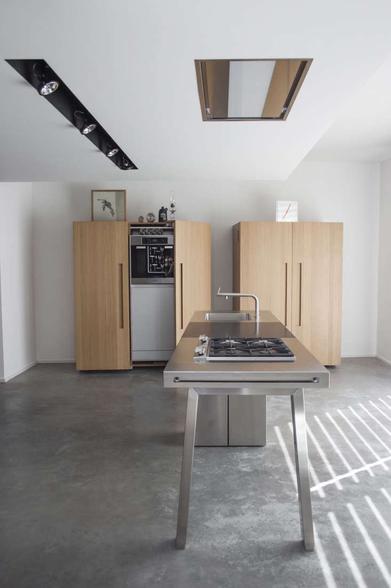Discover the benefits and considerations of installing ceiling range hood ventilation in your kitchen. Improve air quality, reduce odors, and enhance the functionality of your cooking space with this essential kitchen appliance. In this detailed article, we’ll explore everything you need to know about ceiling range hood ventilation, from how it works to installation tips and maintenance.

Understanding Ceiling Range Hood Ventilation
Ceiling range hood ventilation systems are designed to remove grease, smoke, steam, and odors produced during cooking. They provide effective ventilation by drawing air upwards and expelling it outside or filtering it through a ductless system. Key benefits include:
- Improved Air Quality: Removes airborne grease particles and cooking odors, keeping the kitchen fresh.
- Heat Dissipation: Helps to dissipate heat generated by cooking appliances, maintaining a comfortable kitchen temperature.
- Enhanced Safety: Reduces the risk of grease buildup, which can pose fire hazards in the kitchen.
- Aesthetic Appeal: Adds a sleek and modern look to the kitchen, especially when integrated into the ceiling.
Types of Ceiling Range Hood Ventilation Systems
Explore different types of ceiling range hood ventilation systems to find the best fit for your kitchen:
- Ducted Range Hoods: These systems vent air outside through ductwork, effectively removing heat, smoke, and odors from the kitchen.
- Ductless Range Hoods: Suitable for kitchens without access to external venting, ductless range hoods filter air through charcoal filters before recirculating it back into the kitchen.
- Convertible Range Hoods: Offers flexibility as it can be used as either ducted or ductless, depending on your kitchen’s layout and ventilation options.
- Island Range Hoods: Designed for kitchens with cooking islands, these hoods are mounted from the ceiling and provide ventilation over the cooking area.
Choosing the Right Ceiling Range Hood Ventilation System
Consider these factors when selecting a ceiling range hood ventilation system for your kitchen:
- Kitchen Size and Layout: Choose a hood that matches the size of your cooking area for optimal ventilation coverage.
- Ventilation Power: Look for hoods with sufficient airflow capacity (measured in cubic feet per minute, CFM) to effectively ventilate your kitchen.
- Noise Level: Check the decibel rating to ensure the range hood operates quietly, especially important in open-concept kitchens.
- Design and Style: Select a hood that complements your kitchen’s decor, whether you prefer stainless steel, glass, or custom finishes.
- Ease of Maintenance: Consider how easy it is to clean and replace filters or ductwork, depending on the type of range hood.
Installing Ceiling Range Hood Ventilation
Proper installation is crucial for the effectiveness and safety of your ceilings range hood ventilation system. Follow these steps for installation:
Preparation:
- Choose the Location: Determine the ideal placement above your cooking appliances to capture smoke and odors efficiently.
- Check Ventilation Options: Decide whether to vent externally through the roof or wall, or use a ductless system with charcoal filters.
Installation Process:
- Mounting the Hood: Securely mount the hood to the ceiling or supporting structure using appropriate hardware and brackets.
- Connecting Ductwork: If ducted, connect the range hood to existing ductwork or install new ducts for proper ventilation.
- Electrical Wiring: Follow electrical wiring instructions carefully and ensure the hood is safely connected to power.
Testing and Adjustments:
- Testing Airflow: Turn on the range hood and check airflow to ensure it effectively removes cooking byproducts.
- Adjusting Settings: Set fan speeds and lighting options according to your preferences and kitchen needs.
Maintaining Systems
To ensure your ceiling range hood ventilation system operates efficiently:
- Regular Cleaning: Clean or replace filters as recommended by the manufacturer to maintain airflow and filtration efficiency.
- Inspect for Buildup: Check for grease buildup inside the hood and ducts regularly, cleaning them to prevent fire hazards.
- Monitor Performance: Pay attention to any changes in airflow or noise levels, which may indicate the need for maintenance or repairs.
- Professional Servicing: Consider scheduling professional maintenance annually, especially for ducted systems and complex installations.
Where to Purchase Ceiling Range Hood Ventilation Systems
Explore these sources for purchasing quality ceilings range hood ventilation systems:
- Kitchen Appliance Stores: Visit local stores specializing in kitchen appliances and ventilation systems for hands-on shopping.
- Online Retailers: Websites like Home Depot, Lowe’s, and Amazon offer a wide selection with customer reviews and detailed specifications.
- Specialty Kitchen Suppliers: Consider purchasing from suppliers that specialize in high-end kitchen appliances and custom installations.
Read too: Elevate Your Home Décor with Exquisite Japanese Style Ceiling Lamp Designs
Conclusion
Ceilings range hood ventilation systems play a crucial role in maintaining air quality and enhancing safety in your kitchen. By understanding the types available, selecting the right model for your kitchen, and ensuring proper installation and maintenance, you can enjoy a cleaner, more comfortable cooking environment.